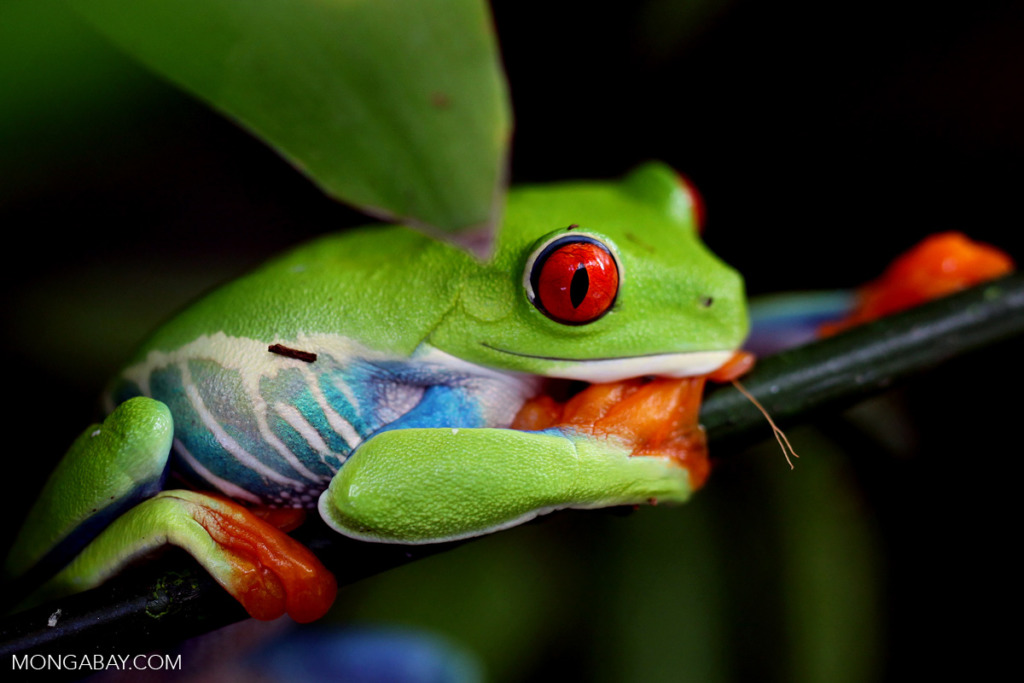RIBBIT RIBBIT RIBBIT…
Ah, the wonderful croaking of frogs on a spring or summer night!
Frogs are famous for the interesting calls they make. Check out the video below for some examples. Male frogs make mating calls. Female frogs make some noises too, like distress calls when they are trying to avoid predators.
But did you know that not all frogs croak?
Until recently, scientists did not know about the existence of a little frog, now named the Ukaguru spiny-throated reed frog. A group of researchers were on an expedition to the Ukaguru Mountains in Tanzania. They were searching for a rare toad when they made an exciting discovery – a new-to-science frog that makes no sound!
Meet the Ukaguru spiny-throated reed frog


The Ukaguru Mountains are like islands in the sky
Tanzania is a country in East Africa. In central Tanzania is a mountain range called the Ukaguru Mountains (red marker on the map of Tanzania below).


The Ukaguru Mountains is are the kind of place where scientists expect to find unusual organisms. That’s because this mountain range is like an island, cut off from contact with the rest of the world. Many of the plants and animals in the mountains are endemic, meaning that they live only in these mountains and nowhere else in the world.
The Ukaguru Mountains are sometimes referred to as sky islands because around 30 million years ago, the entire region was covered by a vast rainforest. However, during a drier and cooler period about 10 million years ago, the lowland forests transformed into savannas.
The transformation of most of the forest into savanna grasslands left the mountainous areas as “islands” of tropical forest. The ancestors of the Ukaguru spiny-throated reed frog frogs were cut off from other forest-dwelling frog populations. This isolated population of frogs evolved into the silent frogs that scientists recently detected.
If a frog does not call, how does it communicate?
Male frogs use their calls to attract mates. How does the Ukaguru spiny-throated reed frog get around this problem? The males of this species have tiny spines on their throats. Scientists think females might touch these spines to identify the males.
Lucinda Lawson, one of the scientists who found the newly described frog explains: “The male frogs don’t call like most other frogs do. We think they may use the spine as something like Braille for species recognition. Without a call, they need some other way to recognize each other.”










